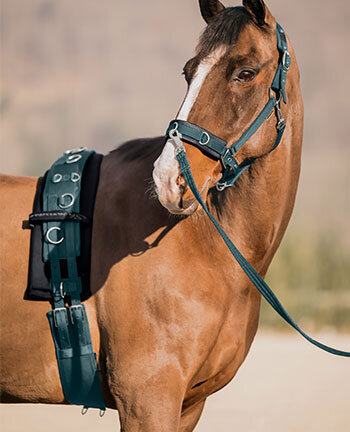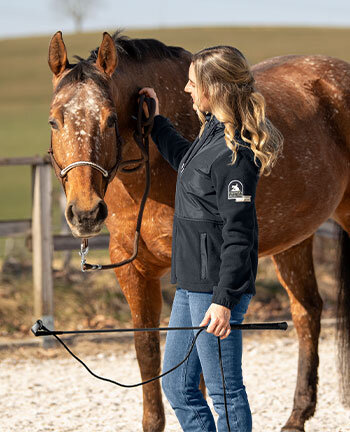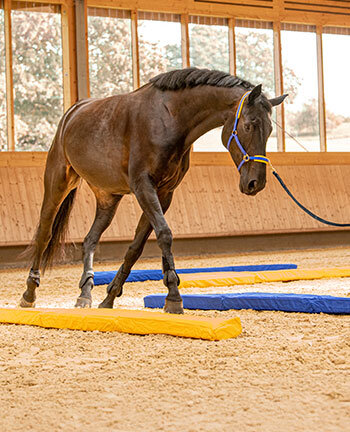
Lungeing & Horse Groundwork
- Frequently asked questions
- How much space do I need for lungeing and groundwork?
- What accessories do I need for groundwork?
- What do I need a horsemanship stick for?
How much space do I need for lungeing and groundwork?
The environment for groundwork can be as varied as the variations of groundwork itself. You can do groundwork while walking in the forest or in indoor or outdoor a arenas. It always depends on what goals you are pursuing with the groundwork.
If you set up a small obstacle course with pylons, poles and blocks, you will of course need more space than if you do standing exercises with a balance pad, for example.
For lungeing, on the other hand, you need more space. The bigger your horse is, the bigger the radius should be. If you are only just starting lungeing and have to get your horse used to the lunge aids, a whip length distance between you and the horse is sufficient. If you both become more confident in using the lunge and whip, you can extend the distance up to 10m or a diameter of up to 20m.
What accessories do I need for groundwork?
Groundwork is a broad term that encompasses communication between man and horse and various disciplines. Depending on the direction you want to take, different accessories are important for groundwork.
Liberty training, trick training and horsemanship or even simply going for a walk with the horse do not require much equipment to be able to develop and achieve a lot with the horse already. The following is sufficient:
- Knot rope halter
- Long lead rope
- Horsemanship stick or whip
- Treat bag and treats
Lungeing can also bring a lot of variety into the horse's movement and training. The following accessories are therefore part of the basic equipment:
Whether further accessories such as a lunge roller are needed depends on the training goal.We have summarised the various types of groundwork for you in our groundwork guide. Here we have also listed the appropriate accessories for each discipline.
What do I need a horsemanship stick for?
A horsemanship stick is intended for groundwork. It can also be called a contact stick, training stick, carrot stick or groundwork whip and is part of the horsemanship basic equipment. It can be compared to the action of a whip for groundwork, where the whip is seen as an extended, directional arm.
A horsemanship stick is used to communicate with the horse in order to give the horse some help in a more understandable way or to frame the horse with the stick and to give it a direction of movement. It allows the human not to have to move away from their standing position in order to touch their horse, for example, on the hind legs. This allows for more precise signalling. Accordingly, a horsemanship stick should be light and easy to grip so that it does not feel heavy in the hand and the arm gets tired after prolonged use.
Depending on the variant, there are horsemanship sticks with a leather flap, horsemanship sticks with a (detachable) lash or lead ropes with leather flap.







